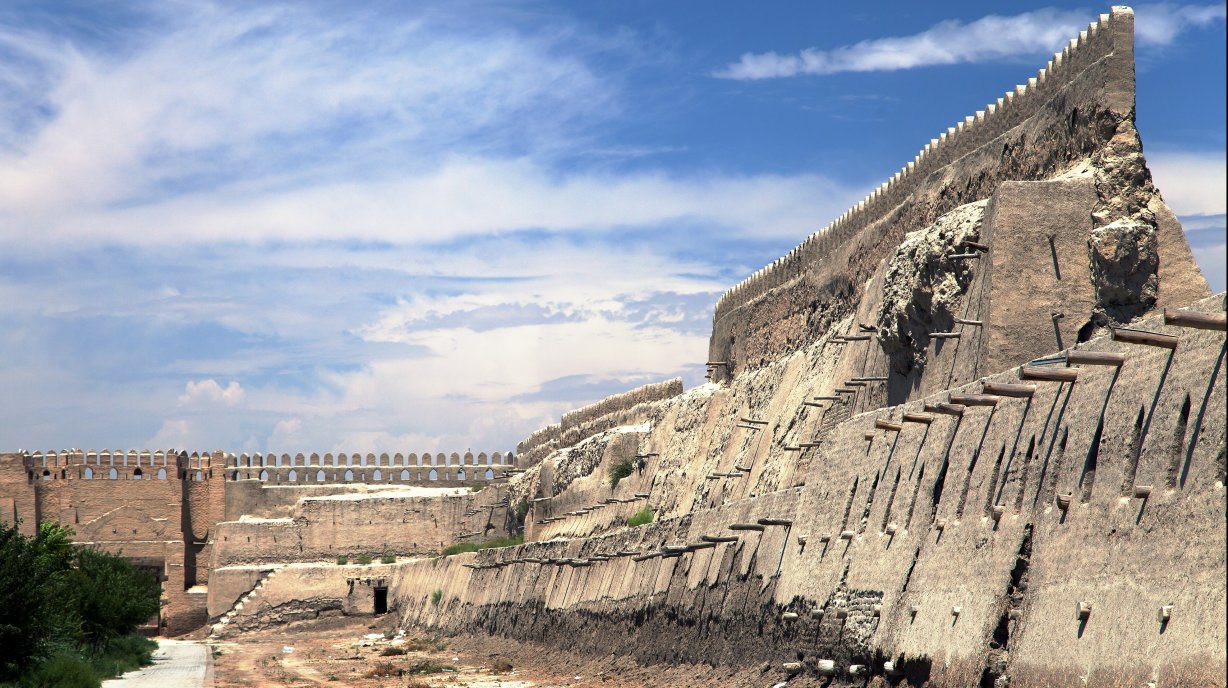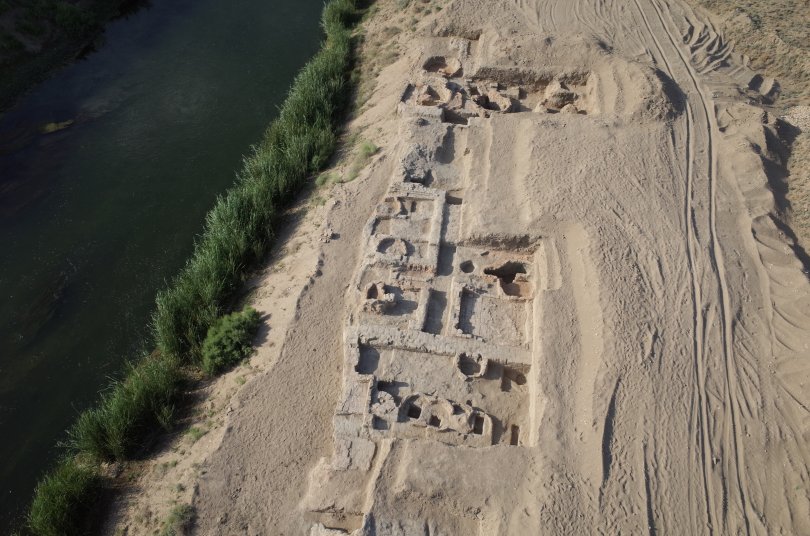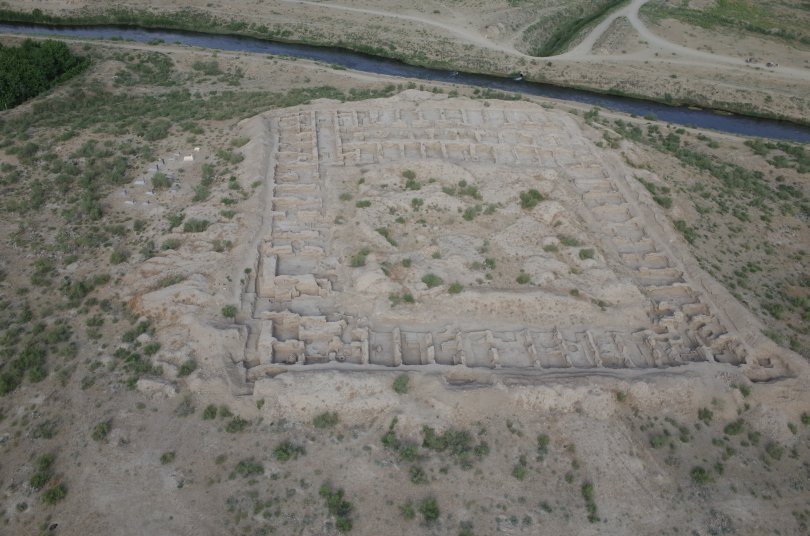Back to the past: when economics meets archaeology

Photo par Daniel Prudek sur Adobe Stock
What can an Uzbek oasis in the ninth century teach us about the modern economy? Isolated in time and space, the oasis of Bukhara is an ideal "laboratory" for understanding the fundamental economic mechanisms behind urban organization. Economist Federico Trionfetti and archaeologist Rocco Rante bring together their disciplines, the past and the present, in their study of this unique place.
If one had to summarize the research work carried out by the economist Federico Trionfetti and the archaeologist Rocco Rante, it would also be a story of encounters. An encounter between two scientific disciplines. On the one hand, archaeology, with its on-site excavations, its physical data, measurements of ancient cities and object discoveries. On the other, economics, with its models and its data processing. Then, the encounter with a place, the oasis of Bukhara, and two different eras: the past, made accessible by archaeology, and the present, through the analytical tools of of economics which give a new meaning to the archaeological finds. An encounter finally between two men, who with the coming together of different disciplines at a scientific conference started a dialogue between their fields to create something new.
Between sand and river
In the southwest of Uzbekistan, in the delta of the river Zerafšan, the oasis of Bukhara extends over 5,100 km², the equivalent of the department of the Bouches-du-Rhône. The conditions are favorable to life, and man has been settled there from the third century BC. But what is the interest of this oasis for scientists? For archaeologists, it is a treasure. The remains of human settlements make it possible to exhaustively reconstruct the cities, villages and sites occupied over vast periods of time. For economists, it is a source of numerous and original data.
In their article, Federico Trionfetti and Rocco Rante focus on the period from the 3rd century BC to the 9th-10th century. The data collected has enabled them to reconstruct the evolution of the cities of the oasis and their organization over time. Thus, 623 sites could be grouped into 53 urban systems. Each system is made up of a main town that contains the commercial and industrial activities and other smaller towns located nearby.

Paykend, pottery quarter, 9th-14th centuries
How can we imagine their evolution? In the 3rd century BC, human settlements were rudimentary. The houses were basic, agglomerated without fortifications, housing a population attracted by favourable conditions and who did not have to worry about defense, since there was room for any newcomer. From the first centuries of our era, things changed: the presence of fortifications shows a need to protect the population, but also economic activities such as agriculture. An economic transformation took place around the 4th century BC. Caravans crossed the oasis. The arrival of the Silk Road marked a more institutionalized production of ceramics and other materials. The trading quarters, then attached to the walls of the cities, developed. The population increased until it reached its peak in the tenth century, after the arrival of Islam, with about 360,000 inhabitants, which was a lot for the time. We then witnessed migration phenomena from small villages to large cities. But not all cities evolve in the same way. Researchers are therefore looking into these differences and their origins.
Between past and present
Numerous and exhaustive data is the dream of every researcher. Here, the authors analyze the urban network of the oasis and its evolution with modern models. The industrial production sites (mainly ceramics) show that there were large cities with both commercial districts and production sites, and networks of small towns which, not producing everyday objects themselves, depended on the production of the large city and were subordinate to it. This interdependence of urban systems is typical of a pre-industrial economy. Yet the resulting urban organization is not unlike that of the United States today. Surprisingly, it responds in a very similar way to the model used by researchers that links population and the "rank" of cities, even though the industrial sector has given way to the tertiary sector and technology has evolved considerably.
A question then emerges. Why in eleven centuries, do some cities explode, becoming large urban centers and others do not? One might assume that the fundamental economic mechanisms behind their development are similar, whether in Bukhara or the United States. However, at the time, without the industrial revolution, radical technological advances or differentiated means of transportation like airplanes or highways, the analysis is easier. Better yet, the culture is homogeneous. The inhabitants share the same language, the same technologies (that is the same type of oven or ceramics), grow the same cereals... The number of mechanisms at work that can explain the differentiated development of cities is therefore limited. The researchers highlight two of them: on the one hand, geographical centrality and on the other hand, the increase in demand due to the Silk Road.

Paykend, East Rabad, caravanserai, 9th-12th centuries,
Between economics and archaeology
The organization of cities thus depends, among other things, on geography. Cities are organized in urban systems where a "manufacturing" city is surrounded by agricultural towns and annexed villages, as is sometimes still the case today. Geographical centrality explains the differences in the populations of these urban systems: those in a central position are larger than those on the periphery. However, in the oasis, another important factor differentiates the urban systems: the Silk Road. Some cities crossed by the caravans developed places dedicated to their reception. The increased demand by merchants thus gave a boost to the local production of goods and services. Ceramics and other archaeological artifacts are found in the urban systems that served as a stopover for the caravans, where the trading quarters are more developed: they are larger by an average of 4.2 hectares, or 6 soccer fields. The cities simply crossed by the trade route (where the caravans do not stop) are not affected by the phenomenon. Here is how an oasis in Uzbekistan, far from being an insignificant discovery, allows us to better understand current economic mechanisms. The quality of the archaeological data found allows the application of economic models to the past, which themselves shed light on the history of the place. This study, at the meeting point between past and present, archaeology and economy, shows the benefits of a science of exchange and multidisciplinarity.













